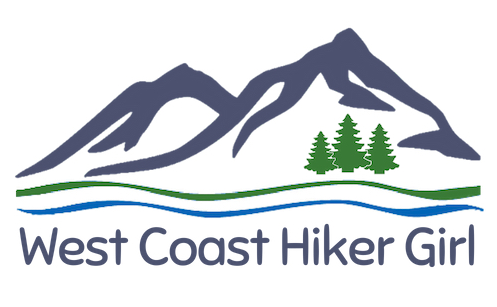In honour of the U.S. National Park Service’s 100th Anniversary, I’ve introduced a feature called “Find Your Park,” named after the popular hashtag the NPS has been using this year to promote the parks. Each unique post features one of the U.S. National Parks that I have had the chance to visit.

Crossing into Sequoia National Park via Forester Pass
Park: Sequoia National Park
Location: Tulare County, CA
Established: September 25, 1890
Size: 404,064 acres
Annual visitors: 1,106,584 (2012)
Backcountry fee: $10 per permit
Times visited: 2
Sequoia National Park is a place of extremes. In the frontcountry zone of the park, you can find the Giant Sequoia Trees, considered the largest living things on Earth. In the backcountry, you find the tallest peak in the Lower 48 of the United States: Mount Whitney. And in between you can find high plateaus, roaring rivers, and unique sensitive species like the southern foxtail pine.
This past summer, I entered into Sequoia National Park’s backcountry along the John Muir Trail. We crossed into the park over Forester Pass, the highest pass of the John Muir Trail and the Pacific Crest Trail. Upon reaching the pass, we were treated to amazing views south of the Great Western Divide.

Looking back, I feel as though my time in Sequoia National Park’s backcountry was rushed and that I didn’t properly stop and take the time to appreciate the park. We only spent two nights in the park, one night near Wallace Creek at the junction for the High Sierra Trail, and then one night on the summit of Mount Whitney.
Our hiking days were long as we traversed the high country. From Forester Pass, we dropped through the long hanging valley to Tyndall Creek, taking a much needed break from the hot sun.

Tyndall Creek, looking towards Forester Pass. (Source: Alan Cordova on Flickr)
As we continued southward, we climbed up onto and crossed over Bighorn Plateau. Unfortunately no bighorns were to be seen (and seldom are, considering the name) but we had amazing views west of the Great Western Divide.

If I could have a do-over of this section of the John Muir Trail, I would build in a night spent on Bighorn Plateau. There is a large tarn (high alpine lake) on the plateau for water, and some small peaks to scramble up. More importantly, I can only imagine how crisp and clear the night sky would be from that location.
As we rounded the southern edge of the Bighorn Plateau, we were given our first impressive view of Mount Whitney.

Mount Whitney as seen from Bighorn Plateau
From the Bighorn Plateau we dropped down to a trail junction at Wallace Creek. The High Sierra Trail follows Wallace Creek west to the Kern River and then south down a canyon before turning west again to climb over the Great Western Divide. The one-way, 72 mile trail can be done in about 5 to 7 days. It is definitely on my to-do list!
After a good night’s rest at Wallace Creek, we continued south for a few miles before turning east towards Mount Whitney. We stopped for a relaxing break in Crabtree Meadows, a popular campground for hikers heading to the summit of Mount Whitney.

Crabtree Meadows with Mt Whitney behind (Source: Wikimedia Commons)
The next couple miles were incredibly enjoyable as we made the slow climb out of the treeline to Guitar Lake. We constantly had Mount Whitney looming ahead of us, and the surrounding forest seemed so unique, with it’s chapparal and sparse twisted old trees.

Treeline Lake, with Mt Whitney looming.
We set up a temporary camp at Guitar Lake, sheltering from the high-altitude sunshine and resting before climbing 3,000 feet of elevation over 4.5 miles of trail. Our rest time was somewhat interrupted by an unfortunate Search & Rescue Operation. Read more about it on my previous blog post JMT: Search and Rescue.
The climb to the summit of Mount Whitney was both physically and mentally challenging, but also incredibly rewarding. There is truly no better feeling than standing on top of a 14,500 foot peak, after weeks spent hiking towards it!

Working our way along Whitney Crest towards the summit
We were lucky enough to have amazing weather and so were able to spend the night on the summit, enjoying both a sunset and a sunrise. To read more about our experience climbing the mountain, visit my previous posts JMT: Whitney Summit and JMT: Sunrise at 14,505.

Whitney summit at sunset
Conclusion
Many people visit Sequoia National Park exclusively to see the largest trees or to summit the highest peak. However the park is so much more than that, with miles and miles of trails to explore, passes and plateaus to stand on, and rivers to relax beside.
If you can’t take a week to hike a section of the John Muir Trail or the High Sierra Trail, then venture to the end of the road in Mineral King and pick a lake to visit overnight, or tackle the 27 mile Sawtooth Pass Loop. You won’t be disappointed by what Sequoia National Park’s backcountry has to offer.
